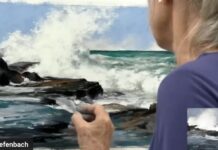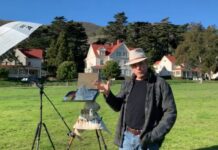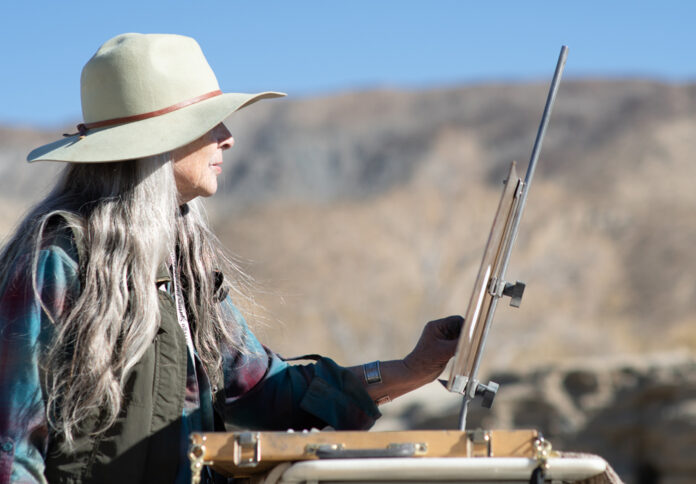
Landscape Painting Demo > For this New Mexico painter, pastel is the ideal vehicle for capturing the oft-hidden details of the desert.
Editor’s Note: We regret that while this article was re-published here in 2023, it was recently brought to our attention that Margi passed away in 2022. The article originally ran in PleinAir Magazine, in August 2022. Read: In Memory of Margi Lucena
Pastel artist Margi Lucena loves her New Mexico home, surrounded by desert beauty that not all can see. Indeed, because of the intense sun and heat, much of the life in the desert remains hidden. Unless there’s rain, living things tend to stay undercover, even if it’s in broken shade. One must learn to appreciate the small and the subtle. Margi sure does.
Clear about her admiration for the over-looked and inconspicuous, the artist says, “I will pull over for a bush by the side of the road. Things hide from the sun, but there is still so much going on. There is life under those bushes, little things that are so beautiful. You know something lives there. People may look around the desert and say there is nothing here — that’s just not so. There are quail — and baby quail — that you hear even if you don’t see them. There are lizards, roadrunners, and rattlesnakes.”
Pastel Landscape Painting Demo: The Fine Art of Fine-Tuning
Step 1
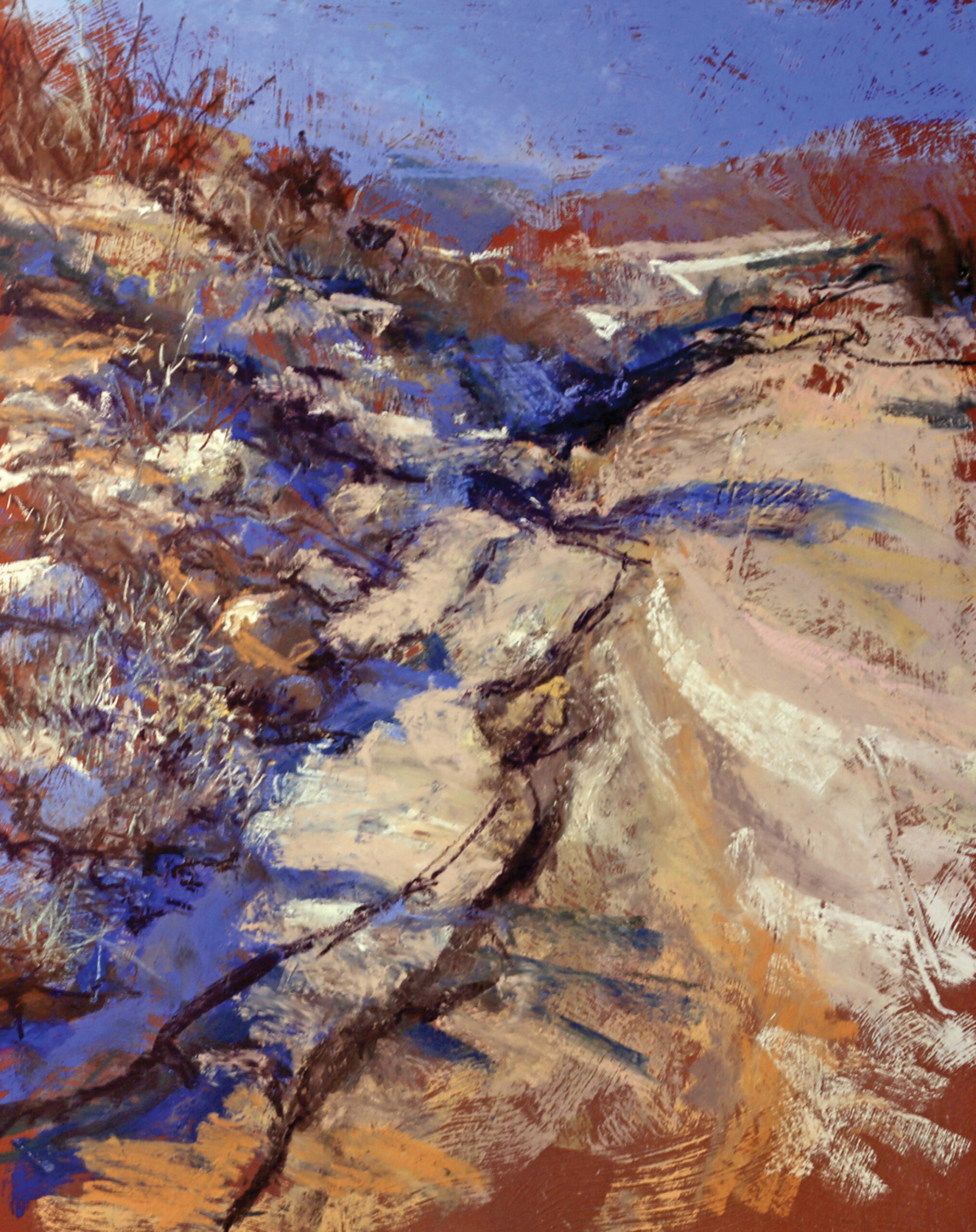
Most step-by-step demonstrations focus on the block-in and early development of a painting, but here, Margi explains the crucial phase of fine-tuning. “Fine-tuning makes all the difference,” she says. “I try to suggest detail rather than state it, so sometimes fine-tuning means getting rid of some detail.”
Pictured here is her painting fairly far along, but at this point Margi was not satisfied with the bottom right portion. “I liked the red underpainting that was showing through and really liked the progress of the piece, but I wanted to very subtly enhance the stones. In the process, I lost some of that red.”
Step 2
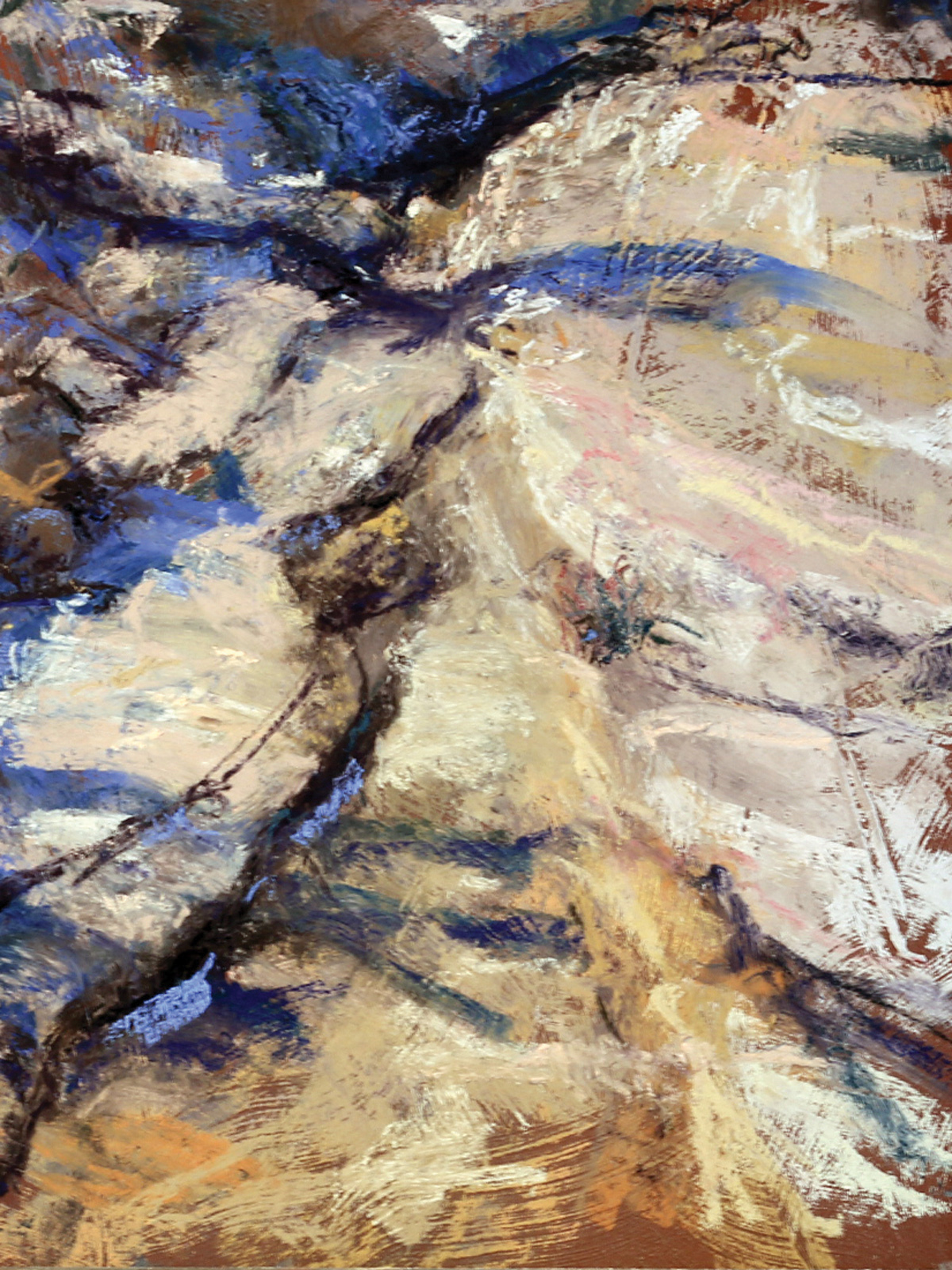
In this stage, Margi took advantage of directional strokes with the pastel stick to fine-tune a passage she felt needed attention. “The white was looking too much like snow, but the sand really was as stark and white as a snowfall,” the artist says. “So I laid the strokes in the shape of the rock and highlighted where the sun was hitting. Actually, most of it was lit, so it was more about the subtle shadows.”
She used an eggplant color for the darkest darks in the scene, which in this part of the painting were the cracks in the rocks. She placed a tiny segment of water in the rocks to show there was a drying stream there. By using something close to the sky color, she was able to communicate that it was water and also tie that part of the painting in with the sky via the reflection.
Step 3
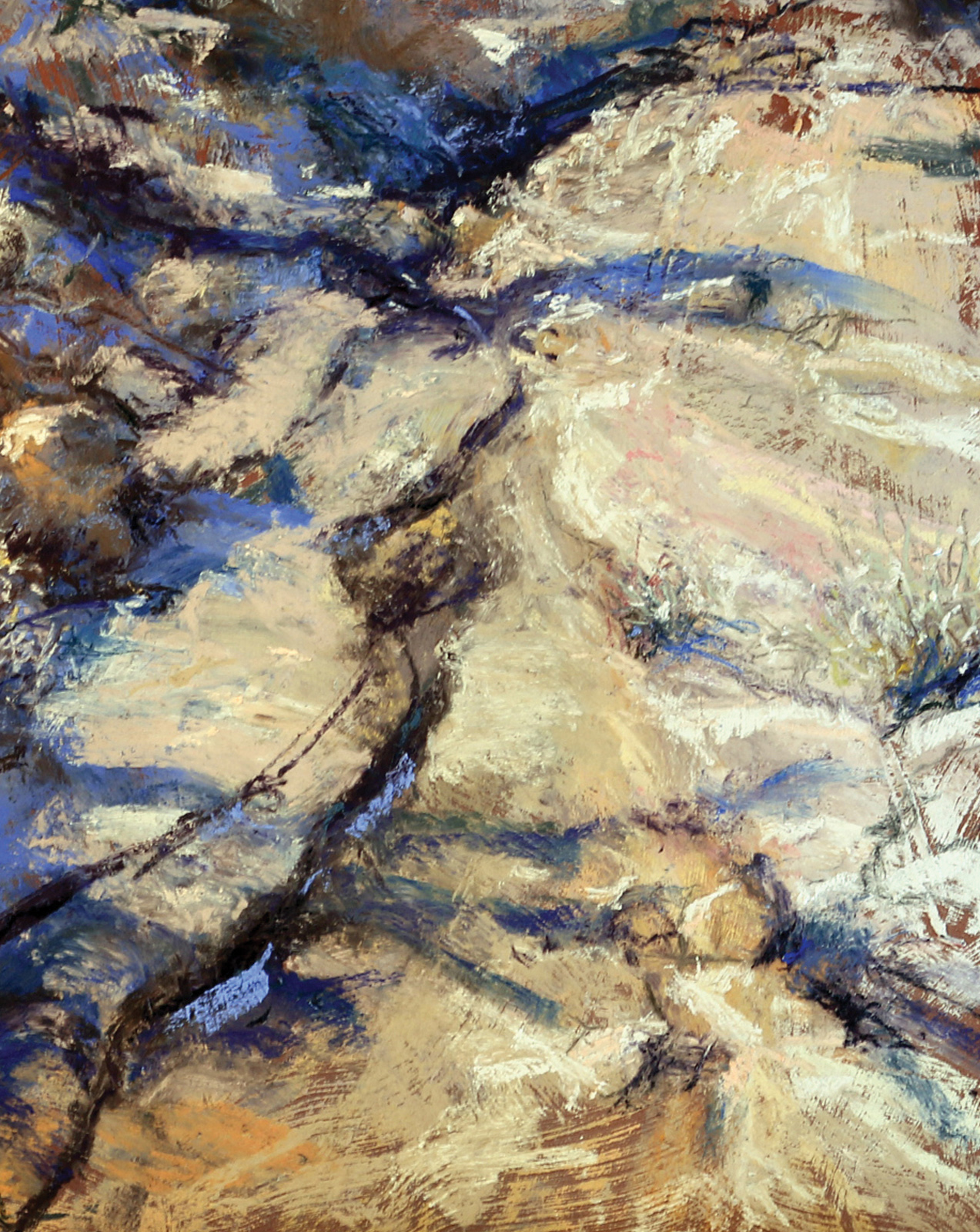
Here, you can see how Margi engaged in a push-and-pull approach to refine elements
in this section of the painting. The outlines or borders of elements were nudged outward or inward until the desired drawing and the effect were achieved.
In situations like this, she advises that you “paint around rocks rather than paint rocks.” She says, “Put the darks in so the contrast itself makes the rocks.”
Step 4
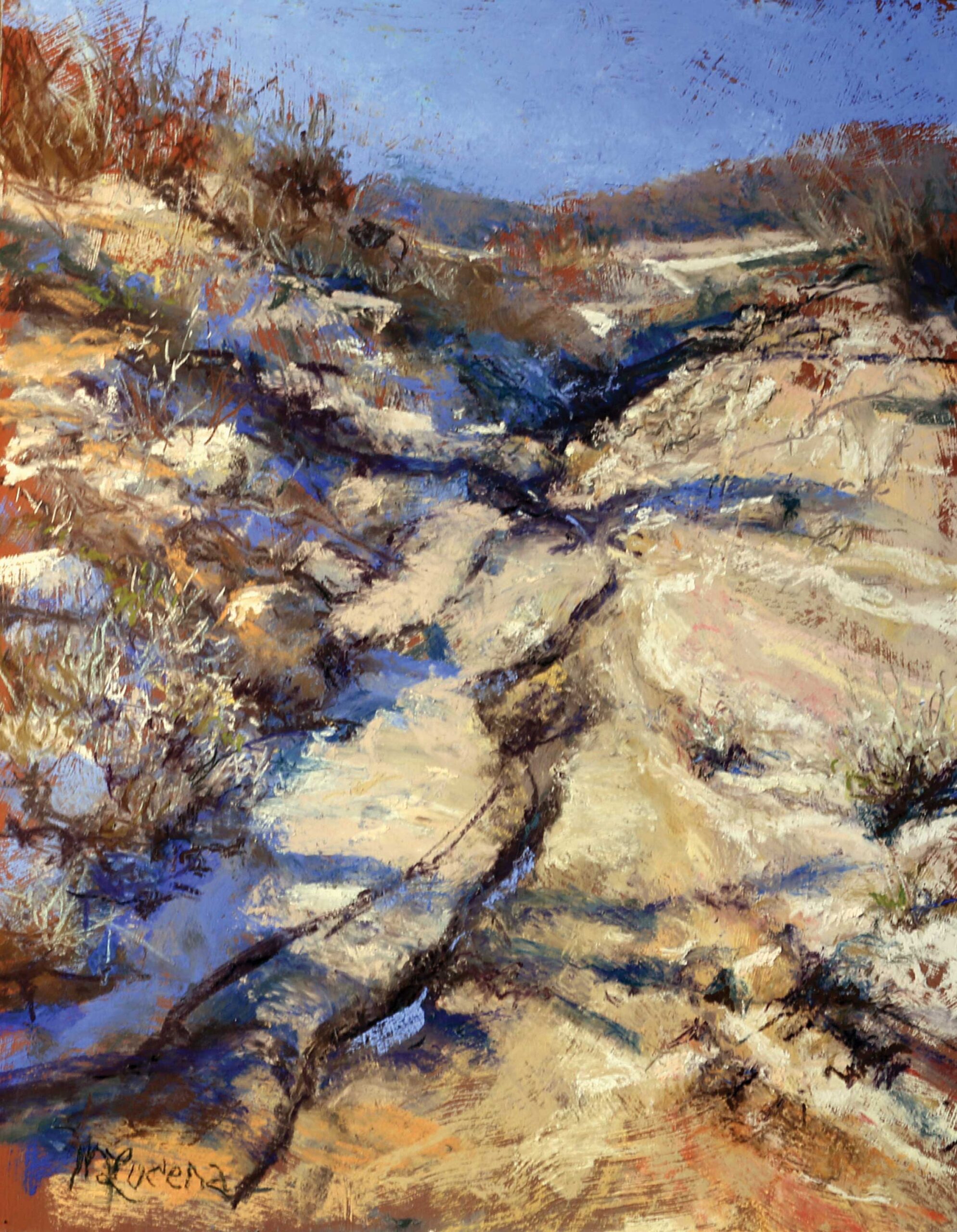
In the final stage, Margi introduced more cool blue into the scene and hit the edges of the stones with a very light color to boost the contrast. She pulled back on some of the darkest darks and refined the brush on the left.
“Push and pull — it’s the nice thing about pastels that you are able to put light over dark without it getting muddy,” she says. “The biggest issue is filling up the tooth and texture of the surface. I don’t even use paper because it is so delicate to handle. The prepared boards I use can slide into a box that makes them easy to transport from the field.”
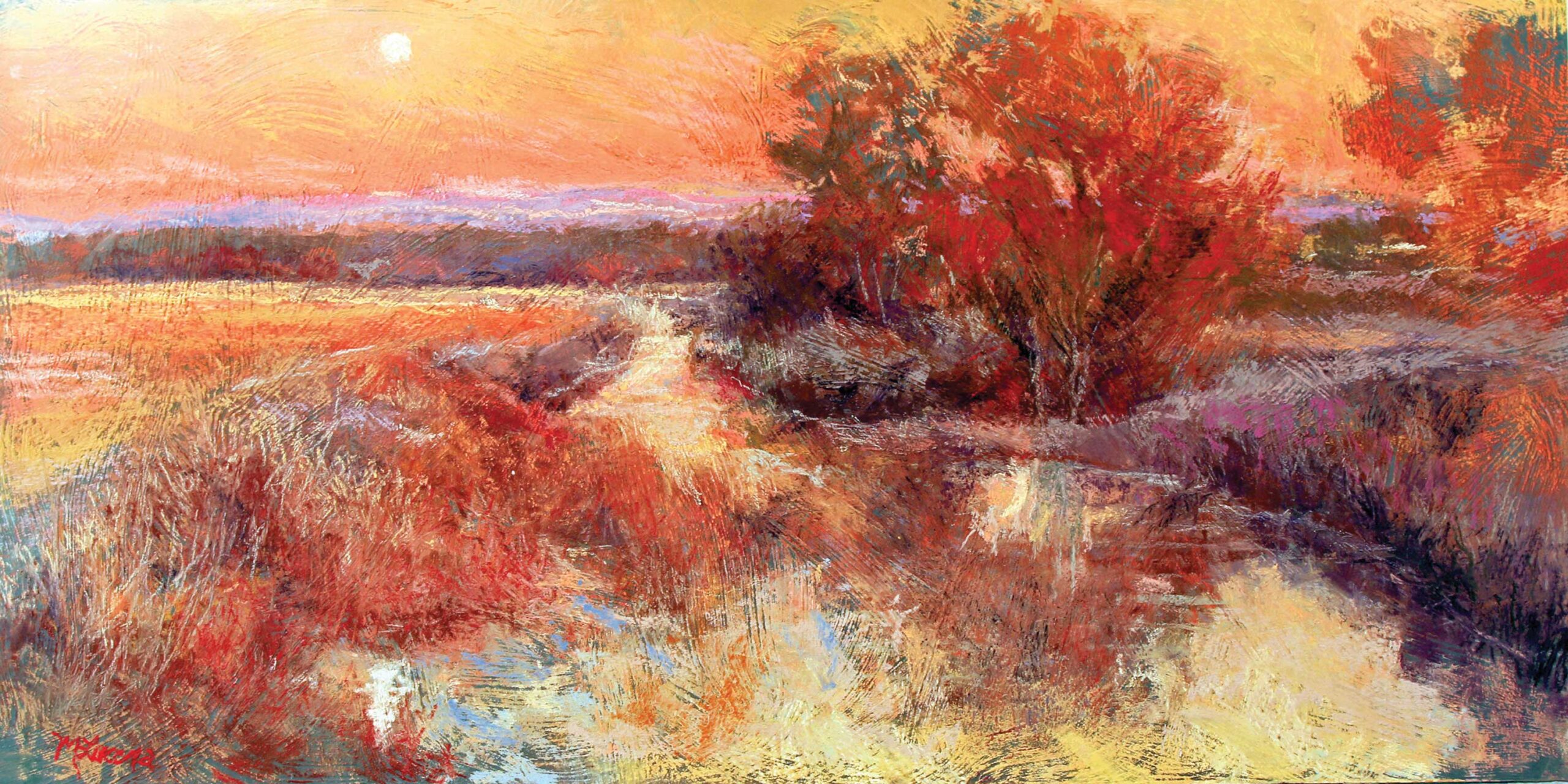
Landscape Painting Resources
- PleinAir® magazine is focused on landscape paintings by historical and contemporary artists, art collections, events, and the process of creating plein air paintings. Beautifully designed with rich reproductions on high-quality paper, PleinAir features the top artists and artworks from around the world. Start your subscription here!
- Become a better outdoor painter today when you get the FREE e-Book for artists, “240 Plein Air Painting Tips.” [click here]
- And browse more free articles here at OutdoorPainter.com

